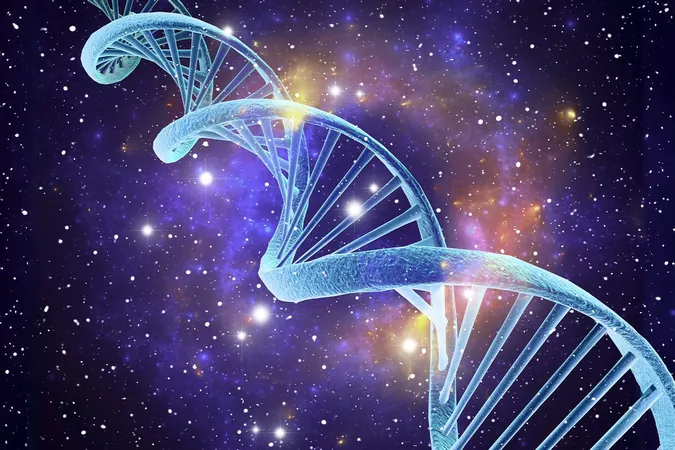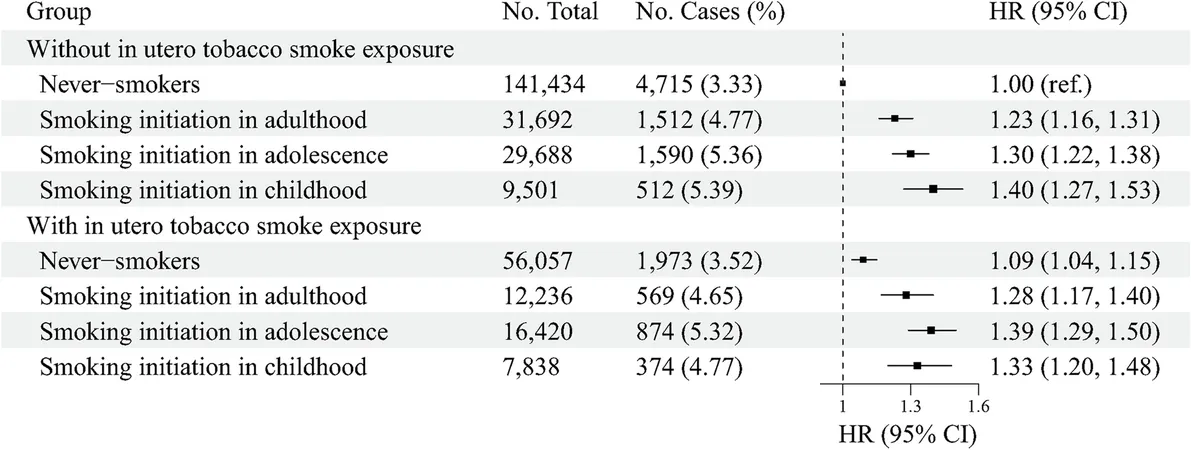
Could This Be the "DNA of the Universe"? A New Theory Attempts to Complete Einstein's Vision for Unified Physics!
2024-11-13
Author: Arjun
The DNA of the Universe
In an intriguing twist that might reshape our understanding of the cosmos, mathematician Robert Monjo claims to have identified what he refers to as the “DNA of the universe” — a double helix structure akin to that of human DNA, but fundamentally representing the fabric of spacetime. This assertion seeks to resolve a long-standing gap in Albert Einstein's quest for a unified theory of physics that consolidates gravity and electromagnetism.
Monjo's Claims and Methodology
Monjo, a mathematics professor at Saint Louis University in Spain, states, “Our study completes the work of Albert Einstein in his attempt to relate gravity and electromagnetism forces in the same geometric theory.” He draws parallels between the intricate relationships found in molecular biology and the dynamics of the universe. By analyzing the curvature and torsion of spacetime, his approach attempts to elucidate how these qualities may lead to more stable particle paths and structural designs in nature.
Collaboration and Publication
Working alongside Dr. Rutwig Campoamor-Stursberg and fellow mathematician Álvaro Rodríguez Abella, Monjo’s team performed extensive mathematical calculations, building upon existing theories within theoretical physics. Their findings were recently published in the journal General Relativity and Gravitation, marking a significant milestone in the ongoing investigation into the enigmatic interplay of physical forces.
Unified Theory and Einstein's Vision
Monjo further explains that by employing transformations of motion, it is possible to derive both gravity and electromagnetism from a single spacetime equation. This advancement mirrors Einstein's early endeavors, where he unified mechanics with relativity, and represents a significant stride toward reconciling fundamental forces that have long been viewed as separate entities.
Skepticism from Experts
However, not all experts are convinced by Monjo's conclusions. Dr. Djordje Minic, a professor at the University of Texas at Austin, expresses skepticism, pointing out that the framework of 'teleparallel gravity' proposed by Einstein faces various conceptual issues, particularly regarding local Lorentz symmetry. Minic raises important questions about how Monjo’s approach aligns with quantum mechanics and the implications for notions such as vacuum energy and the masses of elementary particles.
Debate Over Quantum Mechanics
While the authors contend that spacetime coordinates can be viewed as matrices, Minic argues this perspective fails to provide deeper insights. He challenges the implications for quantum mechanics, pointing out the unresolved nature of quantum correlations within this proposed framework.
Support for Monjo's Work
In sharp contrast to Minic's skepticism, Dr. Avi Loeb, a prominent theoretical physicist at Harvard University, commends Monjo's work as 'highly technical' and laden with original mathematical methods for depicting particle interactions across a unified framework of gravity and electromagnetism. He emphasizes that while the double helix metaphor may seem biological in nature, its significance should be understood purely in mathematical terms.
Conclusion and Future Implications
As scientists continue to grapple with these claims, the broader academic community remains divided. Monjo's findings might not only push the boundaries of physics as we know it but also spark new discussions and experiments that could reveal foundational truths about the universe itself. While the quest for a unified theory is far from over, this latest proposal underscores that the journey into the unknown is filled with promise and potential, even as scientists decipher the mysteries that lie beyond our reach.
Stay Tuned!
The quest for understanding the universe intensifies, and we may be on the verge of groundbreaking discoveries in fundamental physics!


 Brasil (PT)
Brasil (PT)
 Canada (EN)
Canada (EN)
 Chile (ES)
Chile (ES)
 España (ES)
España (ES)
 France (FR)
France (FR)
 Hong Kong (EN)
Hong Kong (EN)
 Italia (IT)
Italia (IT)
 日本 (JA)
日本 (JA)
 Magyarország (HU)
Magyarország (HU)
 Norge (NO)
Norge (NO)
 Polska (PL)
Polska (PL)
 Schweiz (DE)
Schweiz (DE)
 Singapore (EN)
Singapore (EN)
 Sverige (SV)
Sverige (SV)
 Suomi (FI)
Suomi (FI)
 Türkiye (TR)
Türkiye (TR)